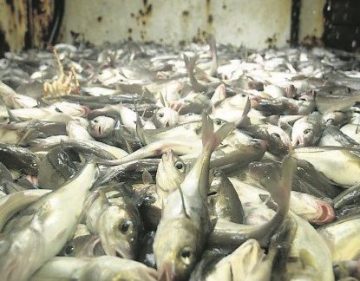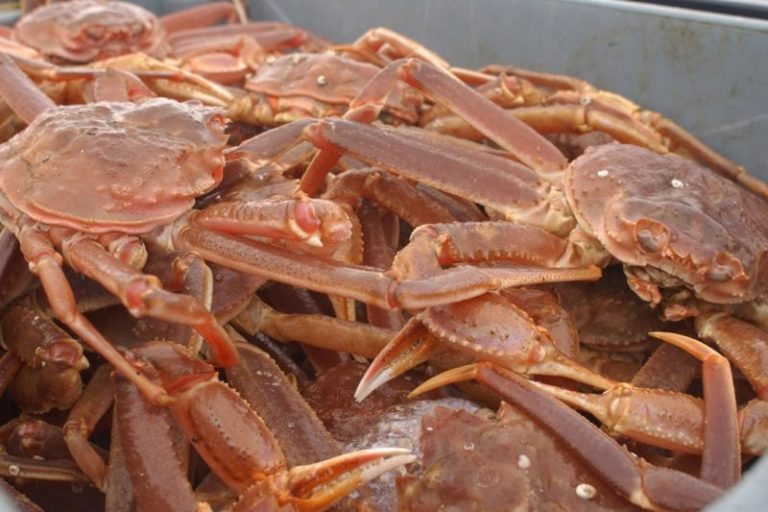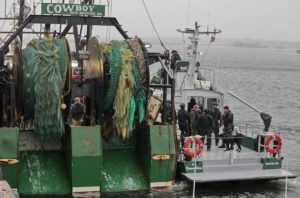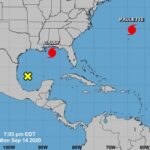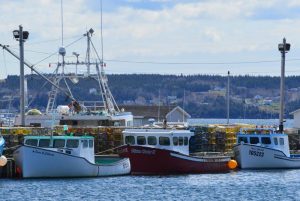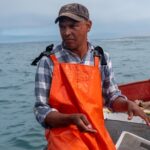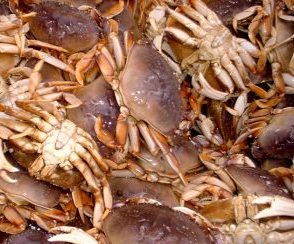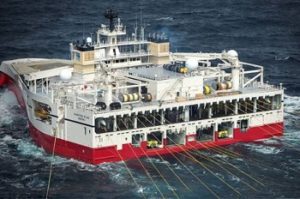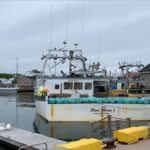Monthly Archives: December 2016
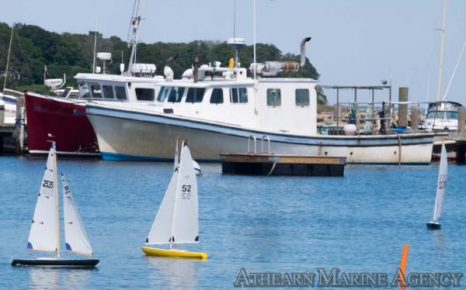
Athearn Marine Agency Boat of the Week: 42′ Sampson Lobster boat, Complete conch business with permit and traps, Cummins Diesel
Specifications, information and 35 photo’s click here To see all the boats in this series, Click here 13:08
Fishing in Gloucester 2016: The year didn’t go swimmingly for industry
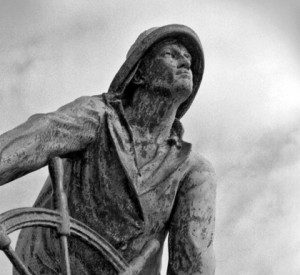 The past year in the commercial fishing industry and along the city’s waterfront has been one of battles, as the city’s legendary fishing industry has fought to remain viable in the midst of regulatory, economic and environmental pressures. Groundfishermen spent much of the year dueling with NOAA Fisheries over who should pay for mandated at-sea monitoring. And fishing advocates, led by the Gloucester-based Northeast Seafood Coalition, continued their crusade questioning the quality of the science NOAA uses in its stock assessments. Lobstermen, NOAA scientists and elected representatives such as U.S. Rep. Seth Moulton, took on Sweden over the Scandinavian country’s attempt to convince the European Union to list American lobsters as an invasive species and ban their importation. Here’s a look at some of 2016’s premier stories: Read the story here 10:59
The past year in the commercial fishing industry and along the city’s waterfront has been one of battles, as the city’s legendary fishing industry has fought to remain viable in the midst of regulatory, economic and environmental pressures. Groundfishermen spent much of the year dueling with NOAA Fisheries over who should pay for mandated at-sea monitoring. And fishing advocates, led by the Gloucester-based Northeast Seafood Coalition, continued their crusade questioning the quality of the science NOAA uses in its stock assessments. Lobstermen, NOAA scientists and elected representatives such as U.S. Rep. Seth Moulton, took on Sweden over the Scandinavian country’s attempt to convince the European Union to list American lobsters as an invasive species and ban their importation. Here’s a look at some of 2016’s premier stories: Read the story here 10:59
News report in France claims to produce world’s best lobster
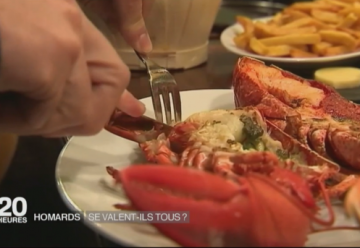 A news report on Le 20h, a French television show, claimed its country produces a better lobster than Canada’s East Coast. The segment shows a Parisian couple comparing a lobster from Breton and a Canadian Lobster. The couple enjoys a few bites, then deems the Canadian crustacean to be less firm, and more watery. They describe the French lobster to be, “beaucoup plus fin,” a finer choice. Local lobster lovers like Louis Leger disagree. Leger owns the Moncton Fish Market, and guesses that if someone is choosing Eurpoean lobster over Maritime fare, they’ve got the wrong person in the kitchen. Leger also argues that if East Coast lobster isn’t so hot, why do Europeans eat so much of it? Read the story here 10:13
A news report on Le 20h, a French television show, claimed its country produces a better lobster than Canada’s East Coast. The segment shows a Parisian couple comparing a lobster from Breton and a Canadian Lobster. The couple enjoys a few bites, then deems the Canadian crustacean to be less firm, and more watery. They describe the French lobster to be, “beaucoup plus fin,” a finer choice. Local lobster lovers like Louis Leger disagree. Leger owns the Moncton Fish Market, and guesses that if someone is choosing Eurpoean lobster over Maritime fare, they’ve got the wrong person in the kitchen. Leger also argues that if East Coast lobster isn’t so hot, why do Europeans eat so much of it? Read the story here 10:13
Coast Guard, Oregon and Washington state wildlife officials monitor Dungeness crab fleet to ensure safety, enforce laws
 The Coast Guard is teaming with Oregon and Washington state authorities to monitor the commercial crab fishing fleet across the Oregon and Washington coasts to ensure safety and enforce the laws and regulations associated with the opening of the Dungeness crab season. The Dungeness crab fishery officially opened Dec. 15 for pre-soak south of Cape Blanco and Oregon and Washington respectively set an opening at 9 a.m. Jan. 1 for commercial crabbing from Cape Blanco north to Klipsan Beach, Wash., and north of Klipsan Beach to Queets River, Wash., at 9 a.m. Jan. 7. Coast Guard aircraft have conducted numerous over-flights of Oregon crab fishing grounds to monitor the pre-soak and the opening in southern Oregon. The Coast Guard will expand patrols up the Oregon and Washington coasts as the season opens in all areas. These efforts assist Oregon and Washington state fish and wildlife officials monitor the state regulated fishery while enhancing Coast Guard search and rescue capabilities. Read the rest here 09:50
The Coast Guard is teaming with Oregon and Washington state authorities to monitor the commercial crab fishing fleet across the Oregon and Washington coasts to ensure safety and enforce the laws and regulations associated with the opening of the Dungeness crab season. The Dungeness crab fishery officially opened Dec. 15 for pre-soak south of Cape Blanco and Oregon and Washington respectively set an opening at 9 a.m. Jan. 1 for commercial crabbing from Cape Blanco north to Klipsan Beach, Wash., and north of Klipsan Beach to Queets River, Wash., at 9 a.m. Jan. 7. Coast Guard aircraft have conducted numerous over-flights of Oregon crab fishing grounds to monitor the pre-soak and the opening in southern Oregon. The Coast Guard will expand patrols up the Oregon and Washington coasts as the season opens in all areas. These efforts assist Oregon and Washington state fish and wildlife officials monitor the state regulated fishery while enhancing Coast Guard search and rescue capabilities. Read the rest here 09:50

Shrimp net-making is still alive in Bayou La Batre
Steve Sprinkle still makes his shrimp nets in Bayou La Batre by hand, an art that has all but disappeared from the American scene. His small shop is full of character and age-old bits and pieces of what is needed for the ancient craft. Inside, you might spot Sprinkle seated and driving needles around green string over and over. Some things have to be made by hand if they are to stand the test of time and the test of the rough, deep Gulf. “It started in the early 1900s when rowboats would drop a net and catch shrimp; then they came out with combustion engines and started towing the net through the water to pick up the shrimp,” Sprinkle said. “My family was on Dauphin Island over 200 years ago. My great-grandfather would shrimp on his own feet wading in the water and pulling a net with his hands.” More images, video, read the rest here 08:50
Race to find fishermen in freezing temperatures as boat capsizes near Ramsgate
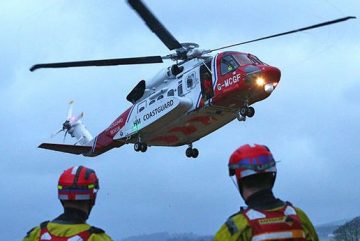 The Maritime and Coastguard Agency (MCA) confirmed it was searching for the missing crew members after the vessel overturned off the Kent coast on Tuesday night, around 11pm. One crew member was rescued after they were found clinging to the hull, but the search for the other three continued into Wednesday morning. They were spotted by a passing boat around 7.30am this morning and were airlifted to Ashford hospital. RNLI press officer John Ray said: “The man who was rescued said that he saw at least one of his crewmates washed over the hull. “He was spotted this morning by a passing ship, found him clinging to the boat and they got him off the hull and raised the alarm with the coast guard. “He said he had seen one person washed into the sea and there is a possibility that the other man is trapped under the hull itself. “We think there were three people on board in total. Read the rest here 08:05
The Maritime and Coastguard Agency (MCA) confirmed it was searching for the missing crew members after the vessel overturned off the Kent coast on Tuesday night, around 11pm. One crew member was rescued after they were found clinging to the hull, but the search for the other three continued into Wednesday morning. They were spotted by a passing boat around 7.30am this morning and were airlifted to Ashford hospital. RNLI press officer John Ray said: “The man who was rescued said that he saw at least one of his crewmates washed over the hull. “He was spotted this morning by a passing ship, found him clinging to the boat and they got him off the hull and raised the alarm with the coast guard. “He said he had seen one person washed into the sea and there is a possibility that the other man is trapped under the hull itself. “We think there were three people on board in total. Read the rest here 08:05
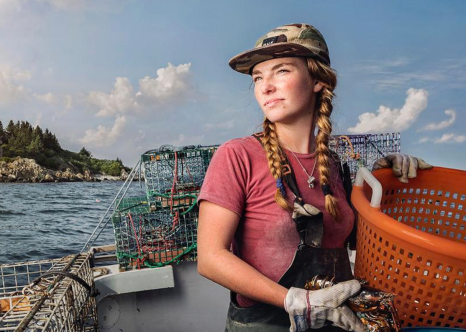
Chris Crisman’s “Women’s Work” Photo Series Shows Women Are Capable Of Any Profession
If there are certain jobs that come to mind when you think of “women’s work” or “men’s work,” Chris Crisman’s “Women’s Work” photo series will shatter those stereotypes to shreds. In order to prove your gender doesn’t have to limit your occupation, Crisman (whom we’ve reached out to for comment, which we will add if we hear back) photographed women in traditionally male jobs. The results are as empowering as they are visually compelling. The portraits are all of real women in roles that defy stereotypes, including a farmer, a brewer, taxidermist, and the operator of a rock hauler. See four images, and read the story here 16:58
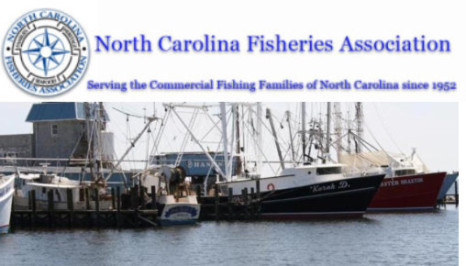
North Carolina Fisheries Association Weekly Update for December 26, 2016
Click here to read the Weekly Update, to read all the updates, Click here 15:14
Dead lobsters, crabs and herring are washing up along this Nova Scotia shore, and we don’t know why!
 Halifax resident Eric Hewey was home in Digby, N.S., visiting for the holidays when he got a call from friends on Boxing Day summoning him to the beach below Savary Park in nearby Plympton. “They said we’ve got to come down and look at the beach.” On Tuesday Hewey described when he found when he arrived at the beach as sad: lots of dead herring — an ongoing and as yet unexplained problem — but also dead starfish, lobsters, bar clams, scallops and crabs. Ted Leighton is a retired veterinary pathologist who has been tracking the dead herring reports. He hadn’t been to the beach to see the most recent findings, but he’s seen Hewey’s pictures and noted it’s a place dead herring have been found before. More photos, read the rest here 13:09
Halifax resident Eric Hewey was home in Digby, N.S., visiting for the holidays when he got a call from friends on Boxing Day summoning him to the beach below Savary Park in nearby Plympton. “They said we’ve got to come down and look at the beach.” On Tuesday Hewey described when he found when he arrived at the beach as sad: lots of dead herring — an ongoing and as yet unexplained problem — but also dead starfish, lobsters, bar clams, scallops and crabs. Ted Leighton is a retired veterinary pathologist who has been tracking the dead herring reports. He hadn’t been to the beach to see the most recent findings, but he’s seen Hewey’s pictures and noted it’s a place dead herring have been found before. More photos, read the rest here 13:09
Concerns linger over Lake Superior’s historic herring fishery
 Minnesota fisheries managers are concerned about the long term health of the lake herring fishery in Lake Superior. Biologists worry not enough young herring are surviving to sustain the fishery, while at the same time demand for the fish has spiked. Minnesota’s 25 or so commercial fishermen who ply the waters off the North Shore have caught a lot fewer cisco in recent years. The herring, or cisco, fishery is always unpredictable, said Steve Dahl, a commercial fisherman who works out of the Knife River marina on the North Shore of Lake Superior. The last few falls have been tough for Dahl, whose nets have yielded fewer herring at a crucial time of year. This year was different, though. “November was really good, one of the better ones I’ve had,” he said. “Towards the end I sort of got overwhelmed, it was just too much.” Read the story here 11:21
Minnesota fisheries managers are concerned about the long term health of the lake herring fishery in Lake Superior. Biologists worry not enough young herring are surviving to sustain the fishery, while at the same time demand for the fish has spiked. Minnesota’s 25 or so commercial fishermen who ply the waters off the North Shore have caught a lot fewer cisco in recent years. The herring, or cisco, fishery is always unpredictable, said Steve Dahl, a commercial fisherman who works out of the Knife River marina on the North Shore of Lake Superior. The last few falls have been tough for Dahl, whose nets have yielded fewer herring at a crucial time of year. This year was different, though. “November was really good, one of the better ones I’ve had,” he said. “Towards the end I sort of got overwhelmed, it was just too much.” Read the story here 11:21
Southeast halibut catch limit may drop in 2017
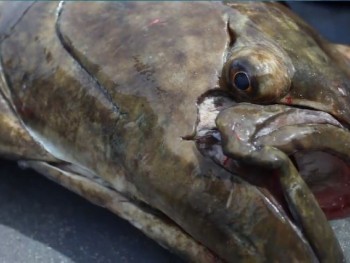 The International Pacific Halibut Commission is considering a cut of 870,000 pounds to Southeast Alaska’s 2017 halibut quota. The IPHC, the joint Canadian-American body that sets annual halibut harvests, concluded its interim meeting Nov. 30 in Seattle. The IPHC will set the 2017 quota at its 93rd annual meeting from Jan. 23 to Jan. 27 in Victoria, B.C. During the interim meeting, IPHC staff recommended that the entire North Pacific halibut catch be reduced from 29.89 million pounds to 26.12 million pounds. Most of the reduction would fall in the eastern portion of the Gulf of Alaska and in Pacific Canada. Read the story here 09:50
The International Pacific Halibut Commission is considering a cut of 870,000 pounds to Southeast Alaska’s 2017 halibut quota. The IPHC, the joint Canadian-American body that sets annual halibut harvests, concluded its interim meeting Nov. 30 in Seattle. The IPHC will set the 2017 quota at its 93rd annual meeting from Jan. 23 to Jan. 27 in Victoria, B.C. During the interim meeting, IPHC staff recommended that the entire North Pacific halibut catch be reduced from 29.89 million pounds to 26.12 million pounds. Most of the reduction would fall in the eastern portion of the Gulf of Alaska and in Pacific Canada. Read the story here 09:50
Invasive Asian carp less than 50 miles from Lake Michigan
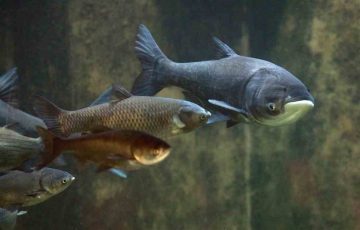 The news is mixed as Great Lake states and the federal government continue to devote money and brainpower to stopping a potential Great Lakes ecological disaster — invasive Asian carp species making their way from the Mississippi River into Lake Michigan. First the good news: The leading edge of the mass of bighead and silver carp hasn’t made much progress lately up the Mississippi and connected rivers toward Lake Michigan. Now the bad news: The younger fish — juveniles — are moving closer, the evidence shows. And they can do more damage. “The bottom line is that the juvenile front is advancing, and made a big jump last year,” said Joel Brammeier, president and CEO of the nonprofit Alliance for the Great Lakes. “And we still don’t have a permanent solution in place that’s going to solve this problem.” Read the story here 08:59
The news is mixed as Great Lake states and the federal government continue to devote money and brainpower to stopping a potential Great Lakes ecological disaster — invasive Asian carp species making their way from the Mississippi River into Lake Michigan. First the good news: The leading edge of the mass of bighead and silver carp hasn’t made much progress lately up the Mississippi and connected rivers toward Lake Michigan. Now the bad news: The younger fish — juveniles — are moving closer, the evidence shows. And they can do more damage. “The bottom line is that the juvenile front is advancing, and made a big jump last year,” said Joel Brammeier, president and CEO of the nonprofit Alliance for the Great Lakes. “And we still don’t have a permanent solution in place that’s going to solve this problem.” Read the story here 08:59
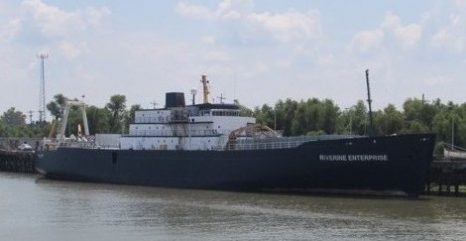
Floating factory vessel to process Invasive Asian Carp in Tennessee
Leaping from rivers and lakes like aquatic projectiles and ravaging the food base of native fish, Asian carp are loathed by outdoors enthusiasts and state wildlife officials alike for being not just a nuisance, but a threat to boating and fishing industries worth $2.9 billion and $2.1 billion, respectively, in Tennessee. Enter Joe Gillas. He sees the invasive fish as an opportunity. Gillas’ company, Riverine Fisheries International, plans to moor a factory fishing vessel at the Port of Cates Landing, located on the Mississippi River near Tiptonville, Tennessee, about 100 miles north of Memphis. The nearly 350-foot-long boat would process Asian carp caught in the Mississippi and other rivers and lakes into food products to be exported to some 20 countries, including China and Russia. “I think there’s a good business model here,” said Gillas, 53, who was born and raised in Alaska and has fished all over the world. “I think we can do something good and make money at the same time.” Read the story here 08:35
South Shore charter fishermen oppose new federal Dusky shark regulations
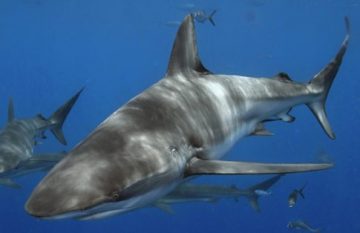 The National Marine Fisheries Service, a federal agency that regulates fishing in U.S. waters, is proposing new rules to protect a vulnerable shark species off the East Coast. Some charter boat captains who fish off the South Shore, however, see a problem with that. They argue that the shark in question – the dusky shark – does not even exist in much of their New England fishing grounds. “There are no duskies north of Cape Cod. None, zero,” Capt. Mike Pierdinock, who sits on the board of the Marshfield-based Stellwagen Bank Charter Boat Association, said last week. His charter boat, “Perseverance,” fishes out of New Bedford. “It’s ridiculous,” he said. “It smells of someone sitting at a desk and not looking at the realities of how things really are.” The National Marine Fishery Service’s proposed regulations are a response to a lawsuit by the environmental advocacy group Oceana. Read the rest of the story here 07:56
The National Marine Fisheries Service, a federal agency that regulates fishing in U.S. waters, is proposing new rules to protect a vulnerable shark species off the East Coast. Some charter boat captains who fish off the South Shore, however, see a problem with that. They argue that the shark in question – the dusky shark – does not even exist in much of their New England fishing grounds. “There are no duskies north of Cape Cod. None, zero,” Capt. Mike Pierdinock, who sits on the board of the Marshfield-based Stellwagen Bank Charter Boat Association, said last week. His charter boat, “Perseverance,” fishes out of New Bedford. “It’s ridiculous,” he said. “It smells of someone sitting at a desk and not looking at the realities of how things really are.” The National Marine Fishery Service’s proposed regulations are a response to a lawsuit by the environmental advocacy group Oceana. Read the rest of the story here 07:56
NFFO Fights Back against Appeasement
 The National Federation of Fishermen’s Organisations, which represents fishermen in England, Wales and Northern Ireland, has launched a blistering attack on UK Fisheries Minister George Eustice, after he made quota concessions to appease nationalist pressure from Scotland during the annual quota negotiations in Brussels. 1500 tonnes of English quota has been taken from the Humberside based Fish Producers Organisation and promised to Scotland without consultation or notice. Also, George Eustice is “consulting” on a revised concordat between the devolved administrations. If implemented, the concordat would mean the transfer of almost the entire English North Sea whitefish fleet into Scottish administration, along with its licences and quota allocations. The NFFO regards as a bogus consultation because the Scottish minister has already announced that the concordat will be implemented as written. The NFFO statement says, “All this is being done behind closed doors, in secret. English fishing interests are being systematically traded away to appease the clamour from Scotland. It stinks. Read the rest of the story here 21:27
The National Federation of Fishermen’s Organisations, which represents fishermen in England, Wales and Northern Ireland, has launched a blistering attack on UK Fisheries Minister George Eustice, after he made quota concessions to appease nationalist pressure from Scotland during the annual quota negotiations in Brussels. 1500 tonnes of English quota has been taken from the Humberside based Fish Producers Organisation and promised to Scotland without consultation or notice. Also, George Eustice is “consulting” on a revised concordat between the devolved administrations. If implemented, the concordat would mean the transfer of almost the entire English North Sea whitefish fleet into Scottish administration, along with its licences and quota allocations. The NFFO regards as a bogus consultation because the Scottish minister has already announced that the concordat will be implemented as written. The NFFO statement says, “All this is being done behind closed doors, in secret. English fishing interests are being systematically traded away to appease the clamour from Scotland. It stinks. Read the rest of the story here 21:27
23 Wellfleet shellfishermen get relief funds
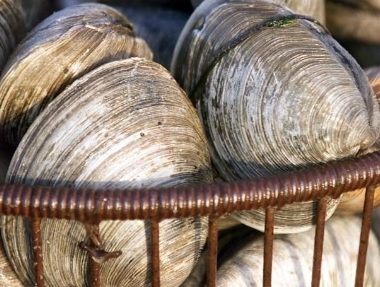 Shellfish Promotion and Tasting (SPAT), which established the Shellfisherman Relief Fund in the wake of this fall’s month-long closure of the town’s shellfish beds, distributed $1,000 relief checks this week to 23 commercial fishermen who submitted completed applications by the Dec. 15 deadline. SPAT is the nonprofit that sponsors the annual OysterFest. A small subcommittee of the SPAT board reviewed the applications on Friday to verify that they included documentation of lost income and of the proposed use of funds, Executive Director Michele Insley told the Banner on Monday. The reviewers decided that each approved applicant would get the same amount of money. The shellfish beds were closed because of a norovirus outbreak from Oct. 13 – two days before OysterFest – until Nov. 14, and shellfish harvested from Sept. 26 on were recalled. As a result, there were virtually no oysters at this year’s OysterFest, and individual fishermen lost $10,000 or more in income on what is normally their most lucrative weekend of the year. Read the story here 18:47
Shellfish Promotion and Tasting (SPAT), which established the Shellfisherman Relief Fund in the wake of this fall’s month-long closure of the town’s shellfish beds, distributed $1,000 relief checks this week to 23 commercial fishermen who submitted completed applications by the Dec. 15 deadline. SPAT is the nonprofit that sponsors the annual OysterFest. A small subcommittee of the SPAT board reviewed the applications on Friday to verify that they included documentation of lost income and of the proposed use of funds, Executive Director Michele Insley told the Banner on Monday. The reviewers decided that each approved applicant would get the same amount of money. The shellfish beds were closed because of a norovirus outbreak from Oct. 13 – two days before OysterFest – until Nov. 14, and shellfish harvested from Sept. 26 on were recalled. As a result, there were virtually no oysters at this year’s OysterFest, and individual fishermen lost $10,000 or more in income on what is normally their most lucrative weekend of the year. Read the story here 18:47
R.I. quota for menhaden the focus of debate
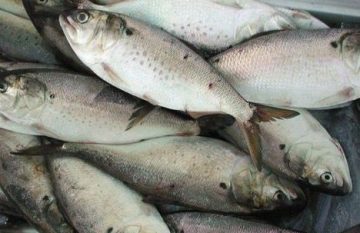 About 30 recreational and commercial fishermen, fish processors, environmental groups (like Save the Bay) and fish managers attended Monday’s public hearing on Atlantic menhaden at the URI Bay Campus held by the Atlantic States Marine Fisheries Commission. The two main issues at the hearing were the use of ecosystem-based management strategies to determine stock status and allowable catch limits, and landing time frames, which would be used to determine allocation of quota. The Atlantic menhaden plan will be the first ASMFC plan that utilizes ecosystem-based management in this fashion. Meghan Lapp of Seafreeze, Ltd., North Kingstown (the largest producer and trader of sea-frozen fish on the East Coast) and a member of the ASMFC Atlantic menhaden Advisory Panel, said “Historically, Rhode Island has landed a lot more fish than the allocation reflects.” Read the column here 16:30
About 30 recreational and commercial fishermen, fish processors, environmental groups (like Save the Bay) and fish managers attended Monday’s public hearing on Atlantic menhaden at the URI Bay Campus held by the Atlantic States Marine Fisheries Commission. The two main issues at the hearing were the use of ecosystem-based management strategies to determine stock status and allowable catch limits, and landing time frames, which would be used to determine allocation of quota. The Atlantic menhaden plan will be the first ASMFC plan that utilizes ecosystem-based management in this fashion. Meghan Lapp of Seafreeze, Ltd., North Kingstown (the largest producer and trader of sea-frozen fish on the East Coast) and a member of the ASMFC Atlantic menhaden Advisory Panel, said “Historically, Rhode Island has landed a lot more fish than the allocation reflects.” Read the column here 16:30
Menhaden are flourishing
 A recent column by Chris Dollar (“Outdoors: The more menhaden the better,” Dec. 3) cites claims from the Chesapeake Bay Foundation that the current management of menhaden in the Chesapeake Bay has left the stock running low. The column also echoes the foundation’s position that the menhaden harvest cap should be lowered. The science suggests the opposite to be the case. In 2012, based on fears of overfishing, the Atlantic States Marine Fisheries Commission implemented a menhaden quota. Soon after the quota was implemented, scientists found the concerns of overfishing were misplaced. Further research found that menhaden are prospering coastwide. In fact, the ASMFC declared conclusively that menhaden are neither “overfished nor experiencing overfishing.” Read the rest here 15:58
A recent column by Chris Dollar (“Outdoors: The more menhaden the better,” Dec. 3) cites claims from the Chesapeake Bay Foundation that the current management of menhaden in the Chesapeake Bay has left the stock running low. The column also echoes the foundation’s position that the menhaden harvest cap should be lowered. The science suggests the opposite to be the case. In 2012, based on fears of overfishing, the Atlantic States Marine Fisheries Commission implemented a menhaden quota. Soon after the quota was implemented, scientists found the concerns of overfishing were misplaced. Further research found that menhaden are prospering coastwide. In fact, the ASMFC declared conclusively that menhaden are neither “overfished nor experiencing overfishing.” Read the rest here 15:58
Maple Ridge B.C. seeks restoration of federal Fisheries Act
 Maple Ridge is talking tough to the federal Liberals when it comes to protecting fish – the same way it did to the Tories four years ago. A Nov. 28 letter from Mayor Nicole Read asks the Liberal government to restore the previous “ecosystems-based approach” to the Fisheries Act. Maple Ridge also wants “clear and meaningful definitions” in any new Fisheries Act and wants public involvement and disclosure of the scientific basis for changing the act. A parliamentary committee is reviewing the Fisheries Act, following drastic changes made by the preceding Conservatives, which removed fish habitat protection. The 2012 changes to the Fisheries Act removed general projection of fish habitat and focused on projecting aboriginal, sport or commercial fisheries from “serious harm.” This fall, the new government asked for public input on how the Fisheries Act could be restored Read the story here 15:22
Maple Ridge is talking tough to the federal Liberals when it comes to protecting fish – the same way it did to the Tories four years ago. A Nov. 28 letter from Mayor Nicole Read asks the Liberal government to restore the previous “ecosystems-based approach” to the Fisheries Act. Maple Ridge also wants “clear and meaningful definitions” in any new Fisheries Act and wants public involvement and disclosure of the scientific basis for changing the act. A parliamentary committee is reviewing the Fisheries Act, following drastic changes made by the preceding Conservatives, which removed fish habitat protection. The 2012 changes to the Fisheries Act removed general projection of fish habitat and focused on projecting aboriginal, sport or commercial fisheries from “serious harm.” This fall, the new government asked for public input on how the Fisheries Act could be restored Read the story here 15:22
Year in Review: Ocean changes upend North Coast fisheries
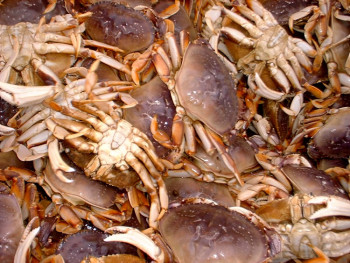 In any other year, the large bins of Dungeness crab that are loaded dockside in this busy fishing village and rolled out by truck to be sold and served during the holidays would seem like no big deal. But after an unprecedented delay in the 2015-16 commercial season forced local crabbers to leave their boats tied up through winter and on into spring, the tons of meaty crustaceans landed in port this month have been a welcome sign of normalcy restored, if only for a moment. For here on the edge of the Pacific, where commercial fishing remains a way of life, once reliable ocean rhythms have been seriously unsettled of late, confounding those who depend on predictable, seasonal cycles and highlighting future uncertainties. Even the current Dungeness season lurched off to a bumpy start, with the fishery opening piecemeal and mostly behind schedule, a symptom of widespread marine anomalies that have prevailed for the past three years, threatening everything from seabirds and sea lions to treasured catches such as salmon and abalone. Read the story here 10:04
In any other year, the large bins of Dungeness crab that are loaded dockside in this busy fishing village and rolled out by truck to be sold and served during the holidays would seem like no big deal. But after an unprecedented delay in the 2015-16 commercial season forced local crabbers to leave their boats tied up through winter and on into spring, the tons of meaty crustaceans landed in port this month have been a welcome sign of normalcy restored, if only for a moment. For here on the edge of the Pacific, where commercial fishing remains a way of life, once reliable ocean rhythms have been seriously unsettled of late, confounding those who depend on predictable, seasonal cycles and highlighting future uncertainties. Even the current Dungeness season lurched off to a bumpy start, with the fishery opening piecemeal and mostly behind schedule, a symptom of widespread marine anomalies that have prevailed for the past three years, threatening everything from seabirds and sea lions to treasured catches such as salmon and abalone. Read the story here 10:04
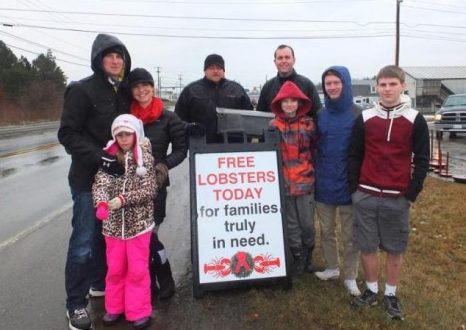
Three years running for free lobster from the Ames family
For his third year now, Matinicus lobsterman Noah Ames has parked his truck in front of Midcoast Marine Supply at 153 New County Road in Thomaston on Christmas Eve and given away free lobsters to anyone who stopped. His whole family was involved this year and Ames put it simply – “This is what Christmas is all about.” Ames said that this year he was also doing a fundraiser for a good friend of his who’s daughter is battling cancer. Ames was proud that his whole family was involved with the free lobster giveaway this year. Also other lobstermen had donated crates of lobsters to give away as well. Read the story here 10:23
Coast Guard medevacs seasick, unresponsive man from fishing vessel in the Gulf
 The Coast Guard medevaced a 28-year-old male aboard the fishing vessel Captain David 40 nautical miles southeast of Venice, Louisiana, Saturday. The Eighth Coast Guard District watchstanders received a report at 3:16 p.m. that Andrew Carl had been suffering from seasickness and had become unresponsive. Watchstanders from Coast Guard Sector New Orleans were notified and launched a Coast Guard Air Station New Orleans MH-65 Dolphin aircrew at 4:26 p.m. The MH-65 aircrew arrived on scene at 5:22 p.m. and transported Carl to Louisiana State University Hospital in New Orleans at 7:46 p.m. He was reported in stable condition but still unresponsive. Link 09:34
The Coast Guard medevaced a 28-year-old male aboard the fishing vessel Captain David 40 nautical miles southeast of Venice, Louisiana, Saturday. The Eighth Coast Guard District watchstanders received a report at 3:16 p.m. that Andrew Carl had been suffering from seasickness and had become unresponsive. Watchstanders from Coast Guard Sector New Orleans were notified and launched a Coast Guard Air Station New Orleans MH-65 Dolphin aircrew at 4:26 p.m. The MH-65 aircrew arrived on scene at 5:22 p.m. and transported Carl to Louisiana State University Hospital in New Orleans at 7:46 p.m. He was reported in stable condition but still unresponsive. Link 09:34
A leaking pipe may have started Alaska Juris demise
 Flashlight in hand, a stunned Chief Engineer Eddie Hernandez peered into the darkness to survey the swamped engine room of the Alaska Juris. The cold seawater was waist-deep, and more was bubbling up from a leak, possibly from a busted pipe on the starboard side of the factory trawler. “I wasn’t afraid or anything. I just felt helpless,” Hernandez was a key witness for Coast Guard officials seeking to unravel the mystery of the Alaska Juris’ demise on a calm, summer day. Officials also are investigating the tangled operations of the vessel’s owner, Fishing Company of Alaska, which teams with a Japanese fish buyer and still operates three factory trawlers whose large crews in remote North Pacific locations net, process and freeze the catch. The hearings offered a gritty look at conditions aboard the vessel, which had benefitted from millions of dollars in investments in maintenance — yet still appeared so unsafe, one engineer said, that he quit this year after spending just a day at port. “The biggest thing that was bugging me was that if I take this job, I’m going to have to lie to my wife and kids about the condition of this boat,” said Carl Lee Jones Read the story here 22:34
Flashlight in hand, a stunned Chief Engineer Eddie Hernandez peered into the darkness to survey the swamped engine room of the Alaska Juris. The cold seawater was waist-deep, and more was bubbling up from a leak, possibly from a busted pipe on the starboard side of the factory trawler. “I wasn’t afraid or anything. I just felt helpless,” Hernandez was a key witness for Coast Guard officials seeking to unravel the mystery of the Alaska Juris’ demise on a calm, summer day. Officials also are investigating the tangled operations of the vessel’s owner, Fishing Company of Alaska, which teams with a Japanese fish buyer and still operates three factory trawlers whose large crews in remote North Pacific locations net, process and freeze the catch. The hearings offered a gritty look at conditions aboard the vessel, which had benefitted from millions of dollars in investments in maintenance — yet still appeared so unsafe, one engineer said, that he quit this year after spending just a day at port. “The biggest thing that was bugging me was that if I take this job, I’m going to have to lie to my wife and kids about the condition of this boat,” said Carl Lee Jones Read the story here 22:34

Russian deep-sea fisherman’s Twitter feed is filled with nightmares
Roman Fedorstov’s account began featuring images of blood-chilling bottom feeders, creepy crustaceans and other sorts of ghoulish sea creatures that he and his crew hauled in their nets while trawling the deep waters off Russia’s Barents Sea. Fedortsov works on a fishing trawler in Murmansk, Russia, and regularly comes in contact with deep-sea dwellers that look like the kind of weird creatures filmmaker Tim Burton would design. The English-language site Moscow Times posted a handful of the photos, but I’ve found even more on Fedortsov’s Twitter. “Such zones are normally undisturbed by commercial fishing, which is precisely why these unusual creatures have survived thus far”. “Some of the shallower living, lighter-colored fishes might be a couple of feet”, Professor James Childress, who researches the biology of deep-sea animals at University of California Santa Barbara. Read the rest here, and visit Romans twitter feed click here 11:24
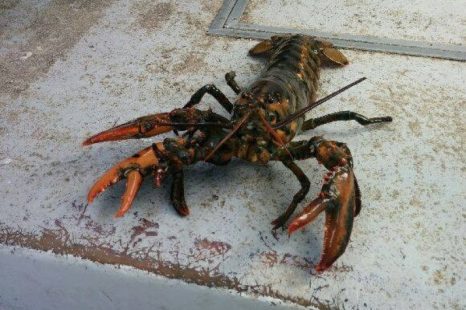
Craziest lobster contest
There are blue lobsters, spotted lobsters, bi-colour and rainbow ones. That’s in addition to the bizarre versions with extra appendages. Billy Mole, marketing manager for Murray GM, says he certainly didn’t expect such a huge response to their Craziest Lobster Contest. “Coming up on three weeks into the contest, we’re close to 150 submissions,” he said,, noting at that time the lobster in the lead for the win had over 800 votes and they expected it to easily reach 1,000-plus votes. The contest is being run through the dealership’s Facebook Page, with the winner being determined by the most likes. The contest was created and organized by Mole and sales consultant Shawn Doucette. “Fishermen are a huge part of our customer base and we wanted to do something special just for them,” said Mole. Read the story here 10:12
Oregon: Entire coast open to commercial crabbing on Jan. 1
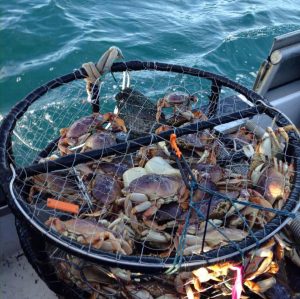 The Oregon Department of Fish and Wildlife and the Oregon Department of Agriculture announce the opening of the commercial crab season from Cape Blanco (just north of Port Orford) to the Oregon/Washington border starting Jan. 1. Fishery managers and food safety specialists consistently exercised caution in opening the crab season this year due to elevated levels of domoic acid found in crabs along Oregon’s central coast. The almost month-long delay in opening the season allowed for additional testing for domoic acid to provide confidence that crab harvested from Oregon waters are safe to consume and of excellent quality. Testing of crab in recent weeks show the elevated levels of domoic acid in the central section of the state have decreased and are all below U.S. Food and Drug Administration alert levels for at least two sample periods in a row. Read the story here From Oregon Department of Fish and Wildlife click here 08:52
The Oregon Department of Fish and Wildlife and the Oregon Department of Agriculture announce the opening of the commercial crab season from Cape Blanco (just north of Port Orford) to the Oregon/Washington border starting Jan. 1. Fishery managers and food safety specialists consistently exercised caution in opening the crab season this year due to elevated levels of domoic acid found in crabs along Oregon’s central coast. The almost month-long delay in opening the season allowed for additional testing for domoic acid to provide confidence that crab harvested from Oregon waters are safe to consume and of excellent quality. Testing of crab in recent weeks show the elevated levels of domoic acid in the central section of the state have decreased and are all below U.S. Food and Drug Administration alert levels for at least two sample periods in a row. Read the story here From Oregon Department of Fish and Wildlife click here 08:52






